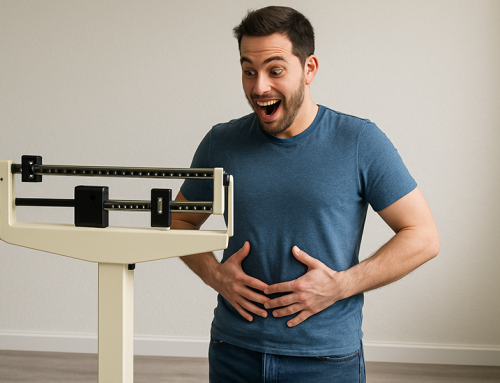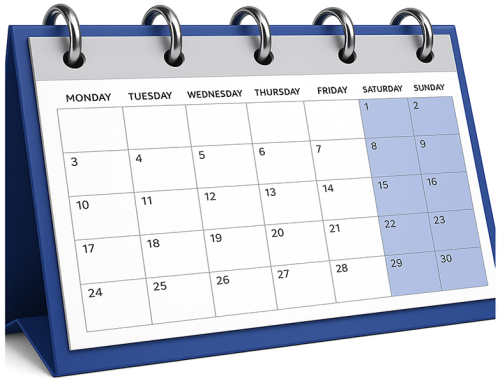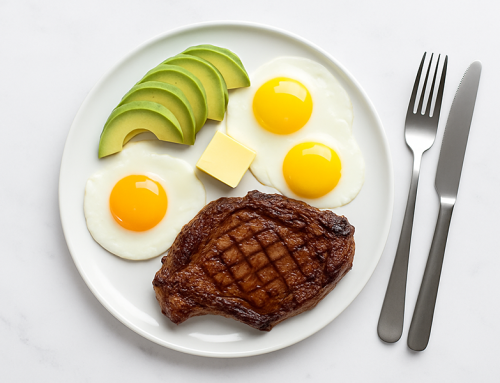I get lots of questions about carb cycling for fat loss. That’s not surprising because I’ve been recommending carb cycling for bodybuilding since the 1990s. I wrote about using it for fat loss in the earliest first edition of my book, Burn the Fat, Feed the Muscle and it’s still a part of the program today.
 The most common questions I get about carb cycling for fat loss are:
The most common questions I get about carb cycling for fat loss are:
- Does carb cycling really burn more fat?
- How does carb cycling work?
- Who should carb cycle? (is it necessary for every dieter?)
- If you’re a good candidate for carb cycling, how often should you raise your carbs (refeed)?
- How long should you refeed (how many hours or days?)
- How many carbs should you eat on the high carb refeed days?
Considering how long carb cycling has been around, there’s shockingly little research about it. However, one new study brought the subject back into the spotlight in 2020 after confirming some of the benefits.
To answer all these questions, we’ll consider the latest science, but won’t ignore common sense or what’s been done in practice for decades either.
Carb Cycling 101
To burn fat, you have to be in a calorie deficit, which means you eat fewer calories than you burn.
Carb cycling for fat loss simply means that instead of staying in a calorie deficit 7 days a week, on some days, you occasionally increase your calories, mostly in the form of carbohydrate. This is a planned increase in calories, typically from the same unprocessed, nutrient-dense foods you normally eat. It is not done at random and it is not a binge or a cheat day.
For example, if you eat fruit, oatmeal, rice, sweet potatoes and whole grains as carb sources when you diet, you continue eating them, only in larger portions.
Even though you eat more carb calories on certain days, at the end of the week, you still have a calorie deficit, so you still lose fat. At the same time, you enjoy major benefits from taking those high days. (Including, obviously, simply enjoying more yummy carbs).
Usually, you raise your carb calories once or twice a week for a full day. This means you eat up to your maintenance level. These higher-calorie spikes are known as refeed days (some people just call them “high carb days”).
For fat loss, most people reduce calories by 20% to 30% below maintenance. So, if your maintenance level is 2700 calories per day and you want a 25% deficit, that’s cutting out 675 calories.
Your daily target for fat loss would be 2025 calories per day. (Those are the low days – i.e. the deficit days). Let’s round it off to 2000 for simplicity.
On a normal diet, you’d just stay there around 2000 calories a day (low days) every day. But if you wanted to try carb cycling, you’d intentionally eat more once or twice a week. Specifically, you’d spike the calories back up to maintenance level. So 2700 calories then would be your high calorie days.
If you ate more of everything on the high days, you could call it calorie cycling. But since the most popular way to handle high days is to eat more carbs, that’s where the term “carb cycling” comes from. If you look at the macros below, it’s only the carbs that change. Protein and fat stay fairly constant.
For a guy around 180 pounds who wants to shred down, the numbers might look like this:
Low day (deficit)
Calories: 2000
Protein: 180g (720 cal) =36%
Fats: 55g (500 cal) = 25%
Carbs: 195g (780 cal) = 39%
High day (maintenance) aka “refeed” day
Calories: 2700
Protein: 180 (720 cal) = 26.7%
Fats: 55g (500 cal) = 18.5%
Carbs: 370g (1480 cal) = 54.8%
Tip: Don’t worry about the macronutrient percentages. Focus on getting the right calories and the right amount of protein, carb and fat grams – in that order of priority.
Make a note that if faster weight loss were desired, the low days would be even lower in calories and carbs. (The protein would still remain steady).
Because calories go up and down, this is known as a “cyclical” or “non-linear” dieting technique. If you kept your calories level all the time, that would be known as “linear” or “continuous” dieting.
In the science papers lately, you sometimes see non-linear dieting referred to as “intermittent energy restriction.” I don’t like that name because it confuses people who think that’s referring to intermittent fasting (which is a different subject, and better described as time restricted feeding).
We’ll stick to the classic bodybuilding diet term, carb cycling (this technique originated in the body-building world).
How Does Carb Cycling Work?
The theory in favor of carb cycling goes like this: It’s not good for the health of your metabolism or your mental state (including your motivation) to be dieting in a calorie deficit for a long time, especially a big deficit. It’s not good for your energy or performance either.
If your calories are too low for too long, you experience adaptive thermogenesis, also known as metabolic adaptation. This means there’s a small but significant hormonally -mediated decrease in your metabolic rate. In turn, that means you don’t actually burn as many calories each day as you would predict on paper.
The hormones that regulate feelings of hunger and fullness are also impacted by caloric restriction, and your urge to eat more increases. High levels of hunger and cravings make it harder to stay on your diet and keep losing weight. Even if you’re disciplined and avoid giving in to binges, continuous hunger is not fun.
Low energy is also a problem with being on low calories all the time. If your energy is down, your training can suffer. Your calories burned from non-exercise activity (N.E.A.T.) can drop as well – you move less throughout the day. This can really add up and the danger is, you might not even notice it.
These negative side effects get worse the longer you diet, the leaner you are, and the larger your deficit. A person who has been on very low calories for a long time, has already lost a lot of fat, and wants to get even leaner, is likely to have the most severe effects of all. (Especially if they keep pushing it with even more low-calorie, linear dieting).
That’s where carb cycling comes in.
Raising calories to maintenance at least once a week has physical and mental benefits. Physically, you re-stimulate your metabolism-boosting hormones (such as leptin and thyroid), increase your energy, and reduce your hunger. Mentally, you get a break from calorie restriction which helps improve your long-term compliance.
When carb cycling for fat loss, you’re still in a deficit most days of the week, so you continue to lose fat. What’s different is you’ve now mitigated many of the negative effects that would occur if you stayed on low calories every day, week after week.
You could increase calories across the board, but there are reasons that the extra calories come from carbs on the refeed days. For one, carbs are the most efficient energy source. Carbs are also psychologically satisfying to eat. There’s also evidence that out of all the macros, only a spike in carbs will reboot the metabolism-stimulating hormones. Eating more fat and protein won’t do it.
Carb Cycling For Maintaining Muscle While Dieting
Many people use carb cycling hoping it will help them lose more fat. In the past, that’s what it’s been most often promoted for.
But if you think about it, eating more once or twice a week means you have a smaller calorie deficit each week. This means in the short term, carb cycling may or may not increase fat loss. Scientists are debating how much of an effect a single refeed day can have on metabolism.
The better explanation for why people do so well with fat loss when carb cycling is that, as explained above, carb cycling helps you stick to your diet better for the long term. Bingeing, cheating, cravings and so on, are greatly diminished because days of eating more are planned into your diet right from the start. Not being in a deficit all the time is what makes the diet easier.
If this non-linear dieting is combined with a less rigid and more flexible approach to food choices as well, the increase in adherence can be quite astonishing.
New research also supports using the carb cycling technique for retaining muscle. What was perhaps the first formal study on carb cycling (and refeed days) was recently done at the University of South Florida, headed up by Bill Campbell. The results were published in the Journal of Functional Morphology And Kinesiology.
The purpose of the study was to compare body composition changes in resistance-trained subjects after 7 weeks of continuous calorie deficit versus non-linear dieting using carb cycling 2 days a week (in this case, two days in a row). A secondary purpose was to see what happens to metabolic rate and hormones like leptin.
The researchers hypothesized that metabolic rate and lean body mass would be maintained better as a result of resistance training and high protein intake, but were uncertain if any improvement in fat loss and metabolic rate would happen because of the carb cycling.
Twenty-seven males and females were split into two groups: A 35% calorie deficit diet with two days of higher carb refeeding at maintenance, or a 7-days-a-week continuous 25% deficit group. Each group lifted 4 days a week.
The refeeding group did not lose substantially more body fat than the continuous deficit group. They did however, maintain lean body mass and resting metabolic rate better than the group that stayed in a deficit all the time.
Due to the study design and the way statistics were reported, more research is needed before drawing too many conclusions. However, this does confirm muscle retention benefits of using refeed days rather than staying in continuous calorie deficit.
Who Should Use Carb Cycling? Is It Mandatory For Everyone?
When you understand the rationale behind it, you can see that not everyone needs to carb cycle. Carb cycling is most beneficial for people who are already dieted down and getting leaner.
As you start to cut back on calories for fat loss, you may start to feel a little hungry right from the first week, but most of the negative effects of calorie restriction don’t kick in until you’ve been dieting for a while.
In the early stages of a diet (the first month or two), it’s simpler and easier to establish a reasonable calorie deficit and stay at that level every day.
Some dieters choose to use carb cycling from the start as a pre-emptive strategy, hoping to sidestep metabolic adaptation and muscle loss before it happens. Others might do it to keep energy levels up, to keep hunger in check, and to make compliance to the diet easier.
If you want to start taking re-feed days right from day one, you certainly can, they’re simply not mandatory at the start of a diet, especially for someone who has high body fat.
Here are some of the conditions when it’s likely that doing carb cycling with higher calorie refeed days will help the most:
1. You’ve been dieting a long time (two to three months or more).
2. You often feel tired, weak and hungry.
3. You’re having trouble sticking with your diet.
4. You’re struggling to maintain your lean body mass.
5. Your body fat is low, but you want to get even leaner.
6. Your fat loss seems slower than you’d predict from the calculations, yet you know your adherence level is solid.
If you’ve been dieting a long time (for months) and you’re feeling depleted, it’s also a good idea to take a full diet break for one or two weeks at maintenance calories. This is like a “metabolism reset” so to speak. Then when you go back to the fat loss phase, re-start with carb cycling.
When Carb Cycling, How Often Should You Raise Your Carb Calories?
If you’ve decided to try carb cycling, the next question is how often should you do it? If the primary goal is fat loss, then most people take a re-feed day once or twice a week. This means that 5 or 6 days a week, you are still in a deficit.
If you decided to take high calorie days more often than twice a week, then you would start cutting into your weekly deficit too much. Eating more on occasion can help the fat loss process over the long run, and help you hold on to muscle better, but if you spike your calories too often, you will actually slow down your rate of fat loss.
Sorry, there’s just no getting around the need for a deficit.
Some people who have a goal to gain muscle as well (aka body recomposition), may use a carb cycling strategy and refeed more often – up to half the week at maintenance calories or even a small surplus. This may sound ideal – gaining muscle and losing fat at same time – but keep in mind if you’re only in a deficit half of the week, then reaching your fat loss goal takes twice as long.
Body recomposition takes a lot of time and is a patient person’s strategy. If you have a lot of fat to lose, your best bet is to stay focused on fat loss as your primary goal until you reach the “lean” category for body composition. Then shift gears and pursue a muscle gain program, if you choose.
When carb cycling for fat loss, you have some room to customize the frequency of these high carb days. You can do it as often as once every 4 days (3 days low, 1 day high), or just once a week (6 days low, 1 day high). You could refeed even less often if you’re in the early months of a fat loss phase, if you feel good and you don’t think you need the extra calories.
In the recent study, they used a 5 days low, 2 days high schedule, so we know this is yet another effective approach. In fact, some people are now speculating that a 2-days in a row refeed might be superior.
Keep in mind that one of the reasons people use carb cycling is that being on reduced calories every day eventually catches up to you and makes most people feel more drained, tired and hungry. Anyone can tolerate a few days, or even a whole week of reduced calories, because you know more food is coming soon. But the mental and physical fatigue may increase with each passing day if the calorie deficit is aggressive.
That’s probably one reason so many people like the classic method where you refeed every fourth day. You literally never have to diet in a deficit more than 3 days in a row. By the fourth day of deficit eating, you’re usually starting to feel a little depleted. Using the 3 days low, 1 high carb cycle, the extra food is coming just in time to rejuvenate you. Going on to a fourth, fifth, or sixth day on low calories, while simultaneously training hard, can be more difficult.
Going weeks on end with constant low calories and hard training, with no cyclical approach at all may be part of the reason for the high failure rate of so many diets. At that point, it’s miserable and continuing on can be a battle of pure will.
The most popular carb cycling schedules then, include:
3 days low, 1 day high
6 days low, 1 day high
5 days low, 2 days high
(For bodybuilding contest dieting, my favorite was always 3 low 1 high, though the 5 low – 2 high method is intriguing).
While these are the most common techniques, you don’t have to do carb cycling on a fixed cycle or schedule. You also don’t have to make a carb cycling schedule fit neatly into a 7 day week (although many people prefer it that way).
Another option is where you choose one or two of your most intense, high-volume or demanding weight training days (legs, back and heavy compound exercise days) and eat more carb calories on those days. Simply aim for one or two re-feed days per week on average and don’t worry if it doesn’t land on the same day every week.
How To Customize Your Carb Cycling Strategy
One way to help you decide how often to refeed is based on how dieted down you are.
The less dieted down you are, and the higher your body fat, the less often you need to refeed.
The longer you’ve been dieting, the more aggressive your deficit has been, and the greater the amount of fat you’ve already lost, the more often you should refeed.
So if you’re months into your diet, you’re depleted, and already pretty lean, refeed more often – I recommend 3 days low, 1 day high. If you haven’t been dieting that long, and you feel good, then you could refeed only once a week or once every 5 to 6 days.
It’s up to you if you want to customize the frequency of the re-feed days. The key point to remember is this: don’t stay in a deficit for more than a week after you’ve been dieting a long time, especially when you’re already very lean. It’s a best practice to take at least one refeed day per week.
I also don’t recommend taking more than 3 refeed days a week if your primary goal is fat loss. Remember, you still need a calorie deficit to lose fat, and carb cycling does not necessarily make you lose fat faster in the short term. Carb cycling is designed to help make dieting easier and prevent negative side effects so you get better results in the long term.
You can make decisions about changing your high carb day frequency by paying attention to how you feel, including your energy during workouts and throughout the day, your level of hunger, whether you feel a lot of cravings after a long time in a deficit and your general level of hunger. If energy is low, hunger is high and progress is slow, that’s a sign to refeed more often.
Another sign for more frequent refeeds is if you’re losing lean body mass. If LBM is dropping, that would be a sign to take more frequent high-calorie/ high-carb days. If your LBM and strength are holding up fine, you don’t need as many re-feeds.
Once you’ve established your high and low day calorie and carb amounts, then keep in mind they are not set in stone – you can increase or decrease the calories on either day (high or low) and change the frequency of re-feed days as well.
On the re-feed days, be sure to bring calories at least up to maintenance level. Do it even if it seems like a lot of food. I find it humorous how many people complain for weeks about being deprived and hungry on a diet, then when I suggest to eat more (on high days when carb cycling), suddenly they’re afraid to do it, or the complaint turns into, “It’s too much food!”
A big problem for people who are scale-centric is that your body weight can spike the day of (or after) your refeed. This is one reason some people abandon carb cycling – they think they’re gaining fat – but weight gain is only glycogen and water. This should be expected because the grams of carbs can go up so much on a refeed day.
Most people find themselves surprised that they can eat a lot more one or two days a week – sometimes to the point of feeling completely satisfied or even full. Yet they still keep losing fat weekly, and enjoying more energy at the same time.
Final Tips And Closing Thoughts
Researchers are still debating how much you can re-stimulate metabolism when you raise calories for only one day. The current consensus is that it’s not enough to restore a suppressed metabolism to normal. The boost in carbs is brief, so the boost in metabolism-regulating hormones is also brief.
Coaches often prescribe full diet breaks of one or two weeks at maintenance calories after long stretches of dieting to more fully restore metabolism. In some cases, for example when someone has been starvation dieting for years, it could take a whole season of maintenance eating (or a muscle gain phase) for all body systems to recover.
However, the benefits of refeed days are not just physical, and that’s why so many people use the technique, even if they think their metabolic health is in good shape. Mentally, it is a lot easier to keep dieting when you know a high carb day is right around the corner, when you get to eat a lot more. That makes it so much easier to stick it out for a few days of deficit eating, compared to thinking about being deprived nonstop with no relief in sight.
The biggest problem that leads to diet failure or weight loss relapse is poor adherence. It’s tough to stick to calorie-restricted diets for long. Any technique you can use that makes it easier to follow your diet is worth considering. The carb cycling, aka refeeding method, is one of them and it now has scientific support.
I hope this helped you grasp all the carb cycling basics, clarify some carb cycling misconceptions, and understand how to customize your own carb cycling plan. If you have any other questions, post in the comments below and I’ll be happy to answer.
If you want to see a complete bodybuilding-style diet program that includes carb cycling, be sure to read (or listen to) Burn the Fat, Feed the Muscle – the Bible of Fat loss
If you’re looking for personal support for your fat loss goals, including unlimited access to me via private forum and private message, be sure to check out our Burn the Fat Inner Circle.
-Tom Venuto,
Founder, Burn the Fat Inner Circle
Author, Burn the Fat, Feed the Muscle
Scientific Reference: Campbell Bill, et al, Intermittent Energy Restriction Attenuates the Loss of Fat Free Mass in Resistance Trained Individuals. A Randomized Controlled Trial, Journal of functional morphology and kinesiology, 5:19, 2020






There needs to be clinical studies done Carb Cycling works because you are CALORIE Cycling. It takes 72 hrs for ur body to realize your calorie intake is low, thats why the 3:1 strategy is best for maintaining Metabolism.
But I have seen it all!
3 on day 4 Carb Load, 5,6,7 Body building Diet (CyberGenics of the 1980’s)
3 LC followed by 1 day High Carb (BFFM)
5 1/2 days LCHF on 36hrs High ( Militant Weight Loss and Body Recomp, Body Opus Dan Duchaine)
6 LCHF days on 24 hr Re feed (Anabolic Diet, Dr Mauro De Pasquale)
Ketogenic LCHF then High Carb Cheat Meal (Vince Gironda)
Having Achieved Full Fat Adaptation with a High Theraputic Index pre-COVID..(Blood ketones of 2.9mg/dl, Blood sugar in the 80’s)
I would like to see research done on this…where you still maintain Fat adapted Status then carb up just enough to fuel resistance training but you are back making Ketones in 24 hrs. Fat Adaptation takes being very careful about WHAT FATS you put in your body and Your diet still is LCHF. Phinney and Volek have done extensive research on the ketogenic diet.
Actually all of these need to be studied…But fron Personal Experience The Cybergenics approach is the most invasive….with Keto flu on days 1, -3, Sugar Crashes Day 4…Then Lather Rinse and Repeat.
based on this sole study some are speculating that 5:2 carb cycling is better for maintaining metabolism, however, there is indeed a lack of studies. many benefits for this technique are psychological and or for performance (restore energy); differences in impact on metabolism and fat loss are less certain.
Thats quite a blast from the past that list of diets. I remember them all. Gironda is where I originally got the idea for 3 low 1 high carb cycling. It was low carb, higher fat low days (lots of meat), then one huge carb meal (not a whole carb day). I later adapted that idea to more balanced macro dieting with low-moderate carb low days and an entire day of high carbs.
Im no longer interested in keto diets – I don’t want to eliminate ANY food groups and I don’t feel better or get leaner on LCHF. Its just a novel / different option that some people might want to use for various reasons. it has never been proven superior on any level (except for appetite control), and LCHF doubtful that it is optimal for performance / optimizing training.
But re your question about what needs to be studied have you looked at any of Louise Burke’s work (she’s out of Australia); mainly looking at LCHFketo in endurance athlete performance though (not body composition / body building), but might interest you.
I will look at Louise Burke….But as much as currently I am a Keto Fan (I have Insulin Resistance, and the resultant lipademas associated with IR) I believe that it is contraindicated in at least 65% of the population (I assume as my physician does that 35% of the USA has some form of insulin Resistance whether they have been diagnosed or not).
Diets are not a one size fits all. My only reason for the 3:1 quote was that Bill Phillips ( again showing my Age) has made a point that it takes 72 hrs for the average human to figure out what calorie intake is…and 48 hrs to indicate what calorie expenditure is. Where he got his data from IDK…but Bill did read the literature…..(His story is intriguing…From Dropping out of Med School , to becoming the 800 lb Gorilla of the Fitness/Supplement industry and owning 8 Lamborginis).
I feel you and I being close in age with common interests…could engage in some seriously interesting conversation on metabolism over a couple glasses of good Bourbon (Neat! On LC DAYS).
Thank u for always challenging the Dogma that plagues the fitness industry! You are quite an inspiration!
From an assortment of your articles including intermittent fasting, losing weight is simply reducing calories below maintenance. The more you cut the faster you lose. As long as you aren’t too extreme it doesn’t matter how you distribute the deficit. You can reduce all meals, carb cycle day, or shift nutrients. However, how you do it does affect how hungry you feel, your energy level, endurance, etc.
In this article’s example, the continuous deficit was 2,000 cal/day is 14,000 cal/wk. Carb cycling for one day would add 2,700 – 2,000 = 700 calories so your deficit would be 13,300 cal/wk. You can reestablish your weekly deficit by reducing your 6-day calories by 700/6 = 117 cal/day. So for the week you’d have 1,883 x 6 + 2,700 = 14,000. I can’t image you’d notice any difference.
Thats what we would expect. minimal difference in fat loss or none, based on different distribution of calories across the week. But this latest study suggests better muscle retention. For long time carb cycling was promoted for *increasing* fat loss, but evidence suggests a prime benefit is maintaining LBM while dieting. However, over the long run (as mentioned in the post), its reasonable to assume that fat loss will improve due to better adherence to the diet. Almost everyone finds it easier to stick to a diet if they little breaks in the form of re-feed days with higher calories compared to continuous deficit. Not a minor point considering adherence is everything in long term fat loss and fat loss maintenance. Also likely some people will get better training performance by spiking those carbs a couple days a week vs staying lower. Cheers